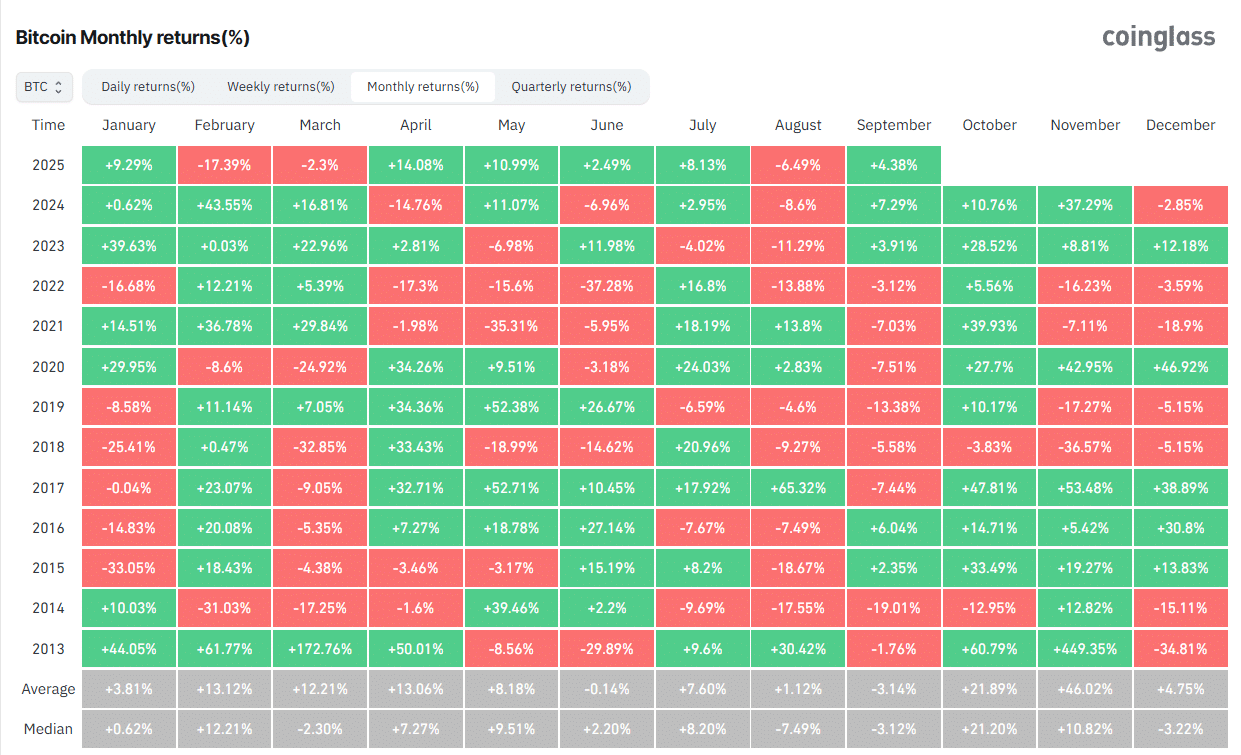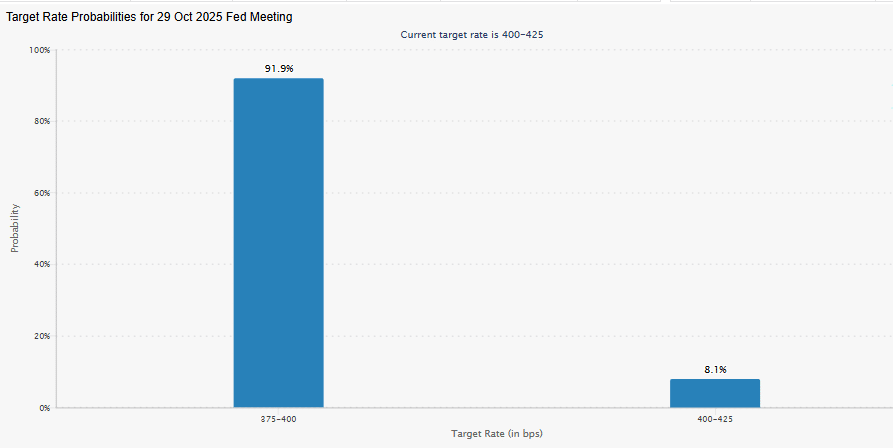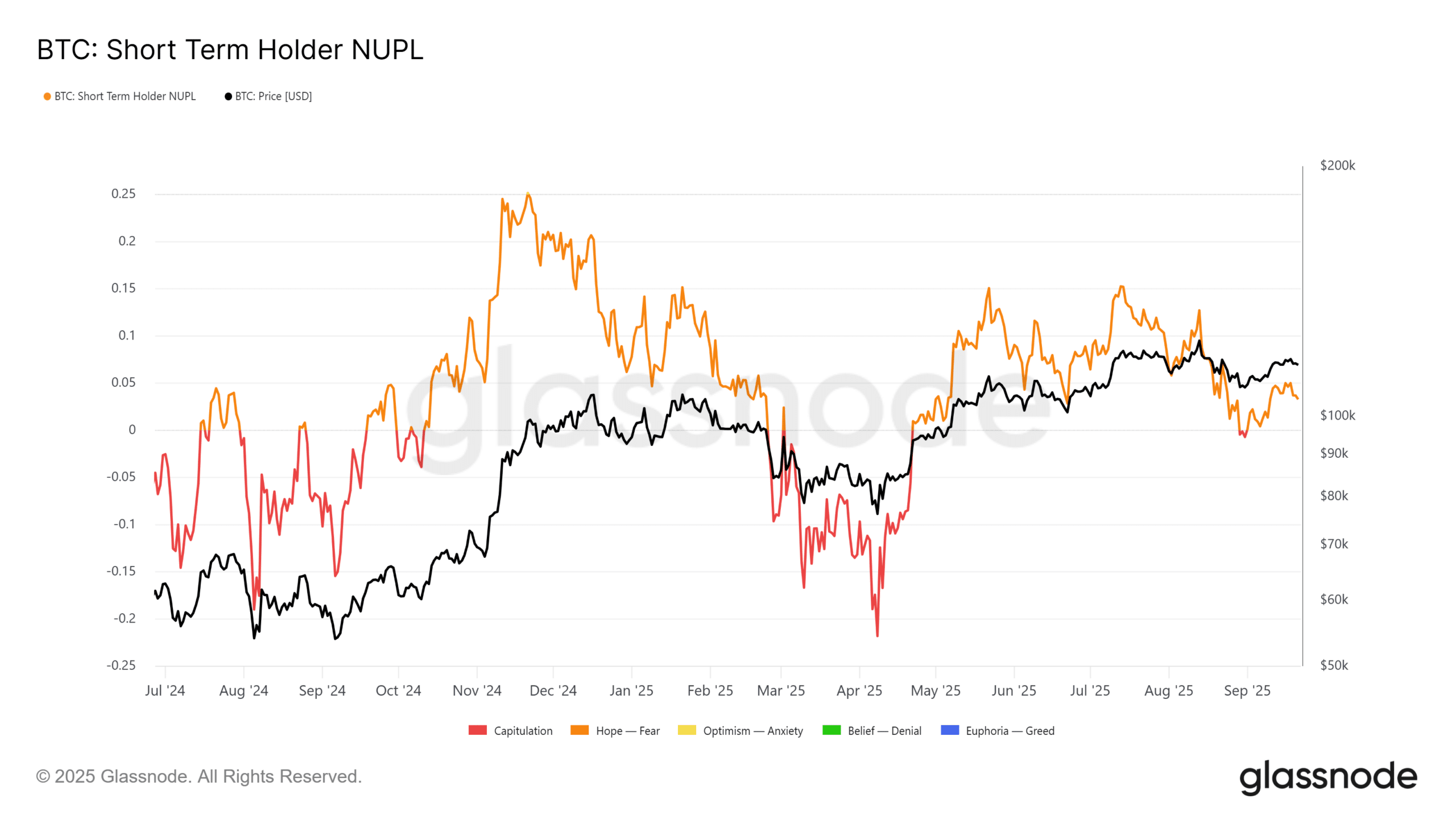Bitcoin’s $110k dip appears to be a leverage flush, not full capitulation — HODLers remain intact, Open Interest contracted by $3B and liquidity sweeps suggest a tactical shakeout that could set BTC up for an Uptober rebound toward $160k into Q4.
-
Leverage flush, not capitulation: Overexposed longs were squeezed during a $114k liquidity sweep.
-
Uptober historically averages +21.89%; Q4 has delivered strong seasonal gains since 2013.
-
On-chain signals (NRPL, NUPL) show HODLer conviction; Open Interest fell by ~$3B in three days.
Meta description: Bitcoin $110k dip looks like a leverage flush, not capitulation; Uptober setup points to a potential rebound to $160k — read Coinotag analysis.
Is Bitcoin’s $110k dip capitulation?
Bitcoin’s $110k dip reads as a targeted leverage flush rather than widespread capitulation. Open Interest fell by roughly $3 billion in three days, and Net Realized Profit/Loss has not flipped red, indicating holders are retaining positions and forced liquidations drove the short-term weakness.
Can the Uptober effect play out again?
Yes. October historically posts an average gain of 21.89%, and Q4 has delivered cumulative gains of 85.42% since 2013. With September typically the weakest month (-3.14% average), the seasonal flip to Uptober, combined with macro easing expectations, supports the potential for a renewed rally.
The Uptober effect on trader psychology
Seasonality shapes trader positioning: a weak September often precedes an aggressive October bid. Traders lean into Uptober when flows and liquidity conditions suggest a relief rally. Data from CoinGlass and historical price series underpin this pattern, encouraging patient holders to maintain exposure.

Source: CoinGlass
How do Fed expectations influence BTC?
Macroeconomic positioning is skewed bullish as Fed cut odds rose sharply. CME FedWatch priced a ~91.9% probability for a 25 bps cut at the late-October FOMC, lifting cut odds ~17.6% week-over-week. Easier policy tends to boost risk appetite, which can accelerate BTC inflows if cuts materialize or become more certain.

Source: CME Fed Tool
Why does the liquidity sweep imply an engineered dip?
A sweep of long liquidity near $114k removed more than $60 million in long leverage, triggering a ~3% 24-hour drawdown. At the same time, realized profits compressed and short-term holder NUPL did not turn negative, suggesting sellers did not capitulate en masse — a hallmark of engineered liquidity grabs to clear over-levered positions.

Source: Glassnode
Frequently Asked Questions
Did HODLers sell into the $110k dip?
No — Net Realized Profit/Loss and short-term holder metrics show limited distribution. HODLers retained positions, suggesting the move was largely driven by leveraged traders being forced out.
What short-term levels matter now?
Key levels: $114k (liquidity cluster), $115–124k (recent range). A sustained recovery above $124k would reduce downside risk and reinforce the seasonal narrative into Q4.
Key Takeaways
- Leverage flush, not capitulation: OI contraction and liquidity sweeps drove the dip.
- Seasonality favors Uptober: October historically posts strong gains; flows reflect this expectation.
- On-chain conviction: NRPL and NUPL show holders remain aligned for a potential Q4 rally toward $160k.
Conclusion
Bitcoin’s $110k pullback looks tactical: overexposed longs were targeted, while HODLers stayed firm. Combined seasonality, rising Fed cut odds, and on-chain flows create a plausible setup for Uptober strength. Monitor Open Interest, realized profit metrics, and FOMC developments for confirmation; Coinotag will continue to track updates.
